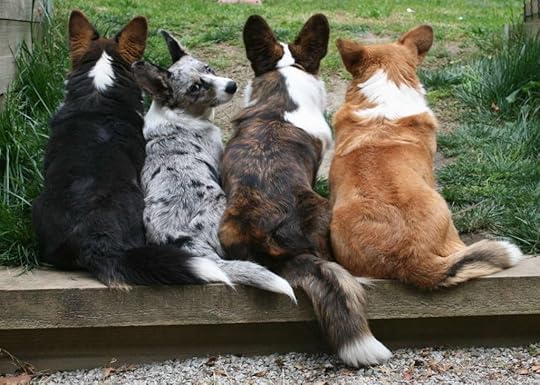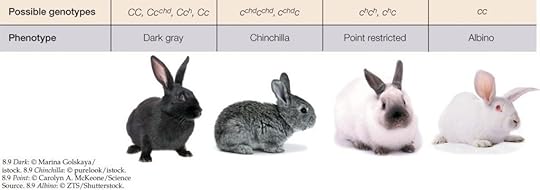Not the actual genetics powerpoint, but here:
Enough of you (two so far!) expressed interest, so here are a couple questions that I may use on the genetics problem set. I’m still putting the final problem set together, but these have good pictures that go with the problem.
These problems involve situations laid out in the powerpoint, so you’re not supposed to necessarily feel comfortable with this just by reading the questions. This sort of thing is meant to follow the lectures and then you’re supposed to have the powerpoint as a reference.
But I hope this will give you a feel for the sorts of things I would like students to be able to do after this set of lectures!
Also, if you recall, in Black Dog Short Stories, there’s a brief “nonfiction” essay about black dog genetics. That is actually a good look at how I handle the half-dozen terms that are relevant to introductory genetics — gene, allele, heterozygous, homozygous, genotype, phenotype.
6) In dogs, the merle color is caused by a completely dominant allele at the M locus. This allele turns any black areas of the coat to a blurred, patchy, black-gray-silver, and any patches of brown to a patchy, diluted reddish-tan. Here is a merle Cardigan Welsh Corgi, looking over her shoulder.
Merle dogs are Mm. Non-merle dogs are mm – they are just whatever color their other color genes specify. MM dogs are largely white. They often die at birth. If they live, they generally have severe eye and ear defects and are largely or completely blind and deaf. This trait can therefore best be treated as a lethal dominant.

6a. If two merle dogs are crossed, what is the chance that any puppy conceived will be MM and therefore die or be seriously impaired?
6b. If two merle dogs are crossed, what proportion of non-impaired puppies would be merle?
6c. What cross could a reputable, ethical breeder use to produce merle puppies without risking the accidental production of crippled puppies?
7) In rabbits, one gene with four alleles controls a set of colors, as shown below. Dominance is complete in order from left to right.

7a. How many alleles can a specific, individual, genetically normal bunny possess?
7b. List all the different genotypes that could result in the black phenotype.
List all the different genotypes that could result in the chinchilla phenotype.
List all the different genotypes that could result in the Himalayan phenotype.
List all the different genotypes that could result in the albino phenotype.
7c. If you cross a chinchilla rabbit carrying albino to a black rabbit carrying Himalayan, what genotypic and phenotypic ratios do you expect in the offspring?
7d. If you cross a chinchilla rabbit whose mother was albino to a Himalayan rabbit whose mother was known to be Cchc, what genotypic and phenotypic ratios do you expect in the offspring?
Please Feel Free to Share:






The post Not the actual genetics powerpoint, but here: appeared first on Rachel Neumeier.



